Dragon Fruit Plant
- November 1, 2023
- 1 comment
The Dragon Fruit Plant, scientifically known as Selenicereus undatus, is a captivating and highly sought-after species within the world of cacti. Native to Central America, this plant has gained global recognition for its unique appearance and delicious fruit.


Selenicereus undatus is a climbing cactus that features elongated, triangular stems with prominent ribs. These stems are covered in delicate spines, and during the blooming season, the plant produces breathtaking, large, white, and fragrant flowers that open at night, attracting pollinators like moths and bats.
The fruit of this cactus, commonly referred to as “Dragon Fruit” or “Pitaya,” is equally remarkable. It comes in vibrant shades of pink or yellow and is known for its sweet and subtly tangy flavor. Rich in vitamins, minerals, and antioxidants, Dragon Fruit is not only visually appealing but also a nutritious addition to one’s diet. Selenicereus undatus is prized by gardeners and fruit enthusiasts alike, and its relatively easy cultivation has made it a popular choice for both home gardens and commercial production. This plant, with its striking aesthetic and delicious fruit, continues to captivate people around the world.
| Characteristics | Description |
| Scientific Name | Selenicereus undatus |
| Common Names | Dragon Fruit, Pitaya |
| Family | Cactaceae |
| Origin | Central America |
| Plant Type | Climbing Cactus |
| Stem Characteristics | Triangular, segmented stems with prominent ribs and spines |
| Flowers | Large, white, and fragrant, night-blooming |
| Fruit | Typically pink or yellow, sweet and mildly tangy, with edible seeds |
| Nutritional Content | Rich in vitamins, minerals, and antioxidants |
| Cultivation | Suitable for tropical and subtropical regions, can be grown in containers or gardens |
| Growth Habit | Vine-like growth, can reach up to 20 feet (6 meters) |
| Pollination | Primarily by moths and bats |
| Preferred Soil | Well-draining soil with organic matter |
| Watering | Requires regular but moderate watering |
| Sunlight | Thrives in full sun or partial shade |
| Hardiness Zones | Typically grown in USDA zones 10-11 |
| Propagation | Can be propagated from stem cuttings or seeds |
| Disease Resistance | Generally resilient, with minimal pest and disease issues |
| Harvest Season | Fruit typically matures in late summer to early fall |
| Uses | Ornamental plant, fruit production, culinary applications, and medicinal uses |
Botanical Beauty of the Dragon Fruit Plant
The Dragon Fruit plant, scientifically known as Selenicereus undatus, is a botanical wonder that captivates both gardeners and nature enthusiasts. Its striking appearance and unique characteristics make it a plant of exceptional beauty. With its enchanting, night-blooming flowers and vibrant, succulent fruit, the Dragon Fruit plant stands out as a botanical gem in the plant kingdom.

Woodland Elegance
The Dragon Fruit plant’s woodsy elegance is not limited to its captivating appearance. Its sprawling, climbing cactus stems, often adorned with delicate spines, create a mesmerizing sight in both natural and cultivated settings. Whether in a tropical garden or a pot on your windowsill, the plant’s lush greenery adds a touch of elegance to any environment, making it a popular choice for horticultural enthusiasts.

Ecological Importance

Beyond its ornamental appeal, the Dragon Fruit plant plays a crucial role in various ecosystems. In its native Central American habitats, it serves as a vital food source for bats and moths, which are key pollinators of its night-blooming flowers. This mutualistic relationship underscores the ecological importance of the Dragon Fruit plant in preserving biodiversity.
Cultivation and Conservation

Cultivating the Dragon Fruit plant has become a global endeavor, thanks to its adaptability and relatively low maintenance requirements. Its cultivation not only provides a source of income for farmers but also contributes to the conservation of this extraordinary species. As the demand for Dragon Fruit continues to rise, it incentivizes the preservation of its natural habitat.
Fragrance
One of the most captivating aspects of the Dragon Fruit plant is the fragrance of its blossoms. The large, white, night-blooming flowers release a sweet, delicate scent that permeates the air after sunset. This enticing fragrance adds a touch of mystery to the garden, making it a favorite among flower and plant enthusiasts.
Soil Stabilization
The Dragon Fruit plant’s extensive root system aids in soil stabilization, particularly in regions susceptible to erosion. Its ability to thrive in well-draining soil makes it an asset in combating soil degradation, a growing concern in many parts of the world.

Common Uses
The Dragon Fruit plant offers a wide array of applications. While its fruit is the most well-known and beloved part, its stems and flowers are also used in various culinary creations. From refreshing smoothies to vibrant salads, the fruit’s unique texture and flavor have found their way into diverse cuisines. Additionally, the plant’s extracts are utilized in traditional medicine for their potential health benefits.

Benefits
The Dragon Fruit plant is not only a feast for the eyes and palate but also a source of numerous health benefits. Rich in vitamins, minerals, and antioxidants, Dragon Fruit is a nutritional powerhouse. It supports immune health, aids in digestion, and may help in maintaining healthy skin. The plant’s fruit, in particular, is a delicious and guilt-free addition to any diet.
Different Species

Hylocereus undatus
Also known as the White-Fleshed Pitaya or Pitahaya, this is one of the most common and widely cultivated species of Dragon Fruit. It has white flesh and pink or yellow skin.

Hylocereus costaricensis
This species is often referred to as the Costa Rican Pitaya or Red Dragon Fruit. It has vibrant red or pink skin and red flesh.

Hylocereus megalanthus
Known as the Yellow Pitaya or Yellow Dragon Fruit, this species has bright yellow skin and white flesh. It’s less common than the red or white varieties.

Selenicereus undatus
This species is also commonly known as the Pitaya or Dragon Fruit and is distinguished by its white flesh and pink or yellow skin.

Hylocereus polyrhizus
Often called the Vietnamese Jaina or Dark Star, this species has dark red or purple skin and red or purple flesh.

Hylocereus ocamponis
This species is less common and is known for its orange skin and white flesh.

Hylocereus megalanthus X Hylocereus undatus (Hylocereus X undatus)
This hybrid Dragon Fruit plant combines the characteristics of the Yellow Dragon Fruit and the White Dragon Fruit, resulting in yellow skin with white or pink flesh.

Hylocereus guatemalensis
Also referred to as the Guatemalan Pitaya, this species has green skin and white flesh.
Frequently Asked Questions (FAQs)
- What is a Dragon Fruit plant?
The Dragon Fruit plant, scientifically known as Selenicereus undatus and other related species, is a type of climbing cactus known for its striking appearance and the exotic, vibrant fruit it produces. - How do I care for a Dragon Fruit plant at home?
Dragon Fruit plants require well-draining soil, plenty of sunlight, and regular but moderate watering. They can be grown in containers or gardens, making them suitable for both indoor and outdoor cultivation. - What are the different types of Dragon Fruit varieties?
Dragon Fruit comes in several varieties, including white-fleshed, red-fleshed, yellow-fleshed, and even purple-fleshed varieties, each with its unique flavor and appearance. - When and how do I harvest Dragon Fruit?
Dragon Fruit typically matures in late summer to early fall. You can harvest the fruit when it’s fully colored and slightly soft to the touch. Use a pair of pruning shears to cut it from the stem. - How do I pollinate Dragon Fruit flowers?
In natural settings, bats and moths are the primary pollinators of Dragon Fruit. For home cultivation, you can use a small brush or your finger to transfer pollen between flowers. - What are the health benefits of Dragon Fruit?
Dragon Fruit is rich in vitamins, minerals, and antioxidants, making it a nutritious addition to your diet. It is known to support immune health, aid in digestion, and contribute to healthy skin. - What pests and diseases affect Dragon Fruit plants?
Dragon Fruit plants are generally resilient but can be affected by pests like scale insects and diseases like fungal infections. Regular inspection and proper care can help prevent these issues. - Can I grow Dragon Fruit in a colder climate?
Dragon Fruit plants thrive in tropical and subtropical regions, so growing them in colder climates may require indoor cultivation or heated greenhouses to protect them from frost. - How do I propagate Dragon Fruit plants?
You can propagate Dragon Fruit plants from stem cuttings or by growing them from seeds. Stem cuttings are the most common and successful method for home gardeners. - What are the culinary uses of Dragon Fruit?
Dragon Fruit is a versatile ingredient used in a variety of culinary applications. It can be consumed fresh, added to smoothies, salads, desserts, or used as a garnish for its vibrant color and mild, sweet flavor.



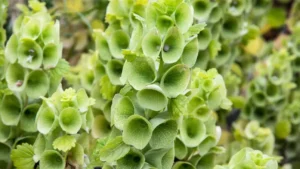


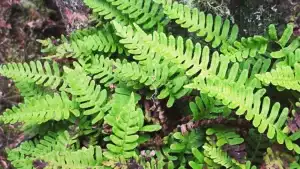
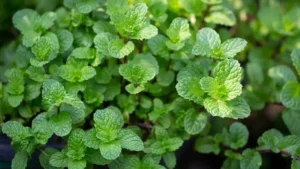

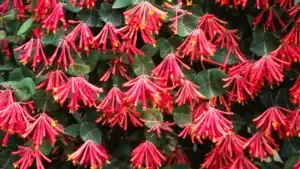



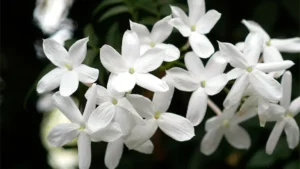
A very well explanations given n need to be noted Thanks
IssaTourabaly
November 1, 2023 10:21 am